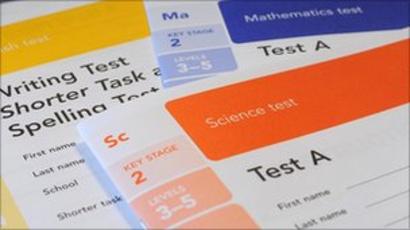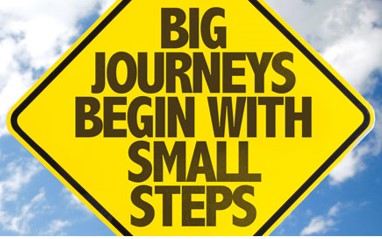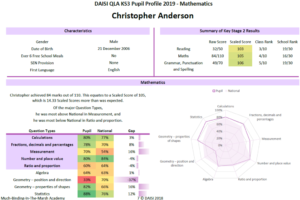What can help pupils make a successful Transition to Secondary School?

We surveyed secondary schools up and down the country asking about Transition.
Every school and area has a different way of working. Most focus first on getting to know their pupils with activity days in school or a mock timetable. This is really important.
But what about academic transition?
Stalled Progress at Key Stage 3
A recent Ofsted report stated..
“the transition to secondary is too often poorly managed and teaching fails to build on the gains pupils have made in primary school. Inspectors have found that pupils often leave primary school with good literacy and numeracy skills, confident and eager to learn, but their progress then stalls when they start secondary school.”
https://www.gov.uk/government/news/too-many-students-let-down-in-early-stages-of-secondary-school
The fact is that the importance of a good start to secondary school education cannot be overstated. Pupils need to enjoy school and get involved with the many subjects to choose them at Key Stage 4.
The report continues..
“School leaders need to have a clear understanding of their pupils’ achievements in primary school and build on them effectively from the day they start secondary school life. Key stage 4 results will not improve until key stage 3 is given a greater priority by school leaders.”
https://www.gov.uk/government/news/too-many-students-let-down-in-early-stages-of-secondary-school
So how can we combat this?
How can you sustain progress in Year 7?

Create a Baseline / Immediate Testing?
Some schools test their pupils immediately themselves.
It gives them a starting point for progress checks throughout Key Stage 3 but can be very time consuming and involves lots of extra marking for staff.
Even if you use other standardised tests on computers, you are adding a level of complication and stress to the start of the school year.
Immediate testing also makes the start of term even more daunting for pupils. They are already dealing with multiple subjects, multiple teachers, multiple changes. It may even give you false results as performance can be upset by anxiety and more.
Surely there must be another way…
Why not use the KS2 SATs?

The KS2 SATs give a validated indication of each of your students strengths and weaknesses and the results are available every year – broken down to performance in each individual question.
These are standardised assessments – marked independently – and so give a clear image of your new year 7s before they arrive at their new school. And yet, so many schools simply do not use or even trust them…
This is despite the fact that progress at Secondary School is judged on these grades!
So how is the KS2 SATs data used in Secondary Schools?
A recent report into how data was used in schools showed that..

62% of teachers said that KS2 results are used to set target achievement grades and yet only
47% said that the scores are given to teaching staff.
41% said that their school used the SATs to put students into groups
Only 21% said that the school used detailed Question Level Analysis of KS2 results to help identify specific weaknesses.
Why not use the Question Level Analysis?
You can get the analysis from these tests before your pupils have set foot in your school. If you choose, you can then supplement them with additional in-house tests – but in the meantime, you already can be acting on the results using a Transition Question Level Analysis.
For better or worse, your Year 7 SATs results are the baseline for your Progress 8 scores in five years’ time.
These tests can be used as an accurate baseline for your new starters.

QLA Transition | Need More Information | DAISI Education
3 Ways to solve the problem of Year 7 Maths
As Peter Maddock, Head of Maths explained in his article in TES: Three ways to solve the problem of Year 7 maths
Wait before you baseline pupils – if you are in a school that routinely sets pupils on entry, you may as well actually use their KS2 Sats scores. Doing a baseline in the first few days and then using this to set could well be less accurate, despite many people thinking the opposite.
If performance is being upset by anxiety around a new school, then your baseline could well be giving you false results. Even if you do normally set the pupils late in the year, or teach mixed ability for the whole of year 7, try and wait until pupils have settled into the routine of your school before you attempt to do any sort of baseline test that is designed to discriminate based on performance.
In my school, we teach mixed ability in Year 7, but we do use a baseline test to see if there are pupils who would benefit from intervention in numerosity, or, conversely, if there are pupils whose Sats might suggest they do whereas, in fact, they don’t.
For next year I will be changing this practice so that Early intervention is planned around KS2 Sats Question Level Analysis, and then the baseline test won’t be conducted until the end of the first unit.
Big Journeys begin with Small Steps

Having an early analysis allowing you to secure some rapid improvement and quick wins with your new mixed-ability cohort is a positive boost for pupils and teachers alike.
By using the SATs scores as a starting point, you can view the full journey knowing how you have helped each individual pupil make progress.
It also means you can work early with your pupils in summer schools knowing their strengths and weaknesses.
QLA Transition | More Information | DAISI Education
How does an early Analysis of KS2 SATs help?
Topic – based targeted intervention from the start of Year 7

For maths, some schools were able to split their pupils into various topic-based groups, to ensure that pupils had targeted support as early as possible, and made real progress in the first half of the Autumn term.
This enabled learning gaps to be closed for all pupils, and to enable pupils the best chance to fully access the Key Stage 3 curriculum.
It also allowed teachers to get to know your their pupil’s subject strengths and weaknesses before they even set foot in their new school.
Year 7 Catch up Premium

Other schools talked about the Year 7 catch-up premium and targeting these additional funds, as well as reporting on the impact that it had.
It can also be used for targeted support for disadvantaged pupils and other groups as well.
It puts Teachers in a Position of Knowledge

Additionally, at some schools, all teachers are responsible for improvement in the core subjects of maths and English, no matter what subject they teach.
They can use the Transition QLA to be informed of the topic strengths and weaknesses, at either the pupil level or at a class level.
This can help pupils to either catch up or to excel at the highest levels.
Start your new year with knowledge of the your new cohort and give pupils the best chance to fully access the Key Stage 3 curriculum.
So in conclusion, how can you create a Transition that maintains academic progression, puts teachers in control and allows every pupil to feel appreciated…
Detailed Question Level Analysis of the KS2 SATs
QLA Transition
Analysis of your new Y7s SATs Results
- Arranged into Class groupings
- Full Cohort Analysis
- Individual Pupil Profiles
So much more than a scaled score
DAISI Education
Thank you for reading this article.
Find other Blog articles by clicking here
Check out more about how we can help your school: Primary | Secondary
Really interesting discussion.
Thank you, please share
This is an area that has been ignored for many years – Thank you DAISI for creating something that we can use..
Thank you. We truly believe that it will help sustain progress – please share with others
Some good points made here. At our school, we do immediate testing of our new year 7s so we can set target grades but can understand how the SATs could also provide it? Would really like to see your analysis.
Hi D, Thank you for your comment. For more information (including sample pages) – use this link: https://daisi.education/transition-qla-explained/
I do not trust the KS2 SATs as they are so teacher trained. Would rather do a test when they reach secondary..
Hi Lynn. Thank you for your comment.
We have have sadly heard this from many secondary staff regarding the KS2 SATs which has always puzzled us. For some reason, they do not have the same reservations with GCSEs saying the pupils earned the results themselves despite the many “teacher trained” hours of revision.
Remember too – your progress 8 measure is based on the KS2 SATs results (not your own baseline).
The fact is that the KS2 SATs are a standardised assessments and marked independently and so do give a clear and unbiased account of your new year 7s academic ability. So why not use them to at the start of Year 7?
I’ve worked in schools for a long time now and can honestly say that the insight we got from the DAISI transition analysis made a real difference in our Maths department. I cannot recommend them enough.
Thank you T for the recommendation.
Would love to know more about how you used the Transition QLA in detail.
An interesting read – makes you wonder why more people don’t use that. Where was your graph from?
Thank you James, the graph was created from answers to a TeacherTapp question. It amazes us that more schools don’t use the KS2 SATs in a more directed way.
Useful summary
Thank you for your comment
This looks really interesting…
Thank you for your comment E!!